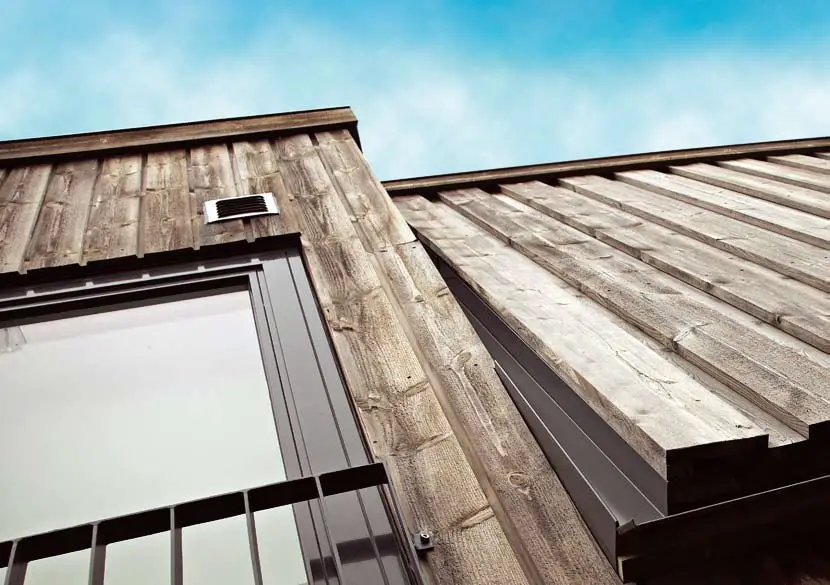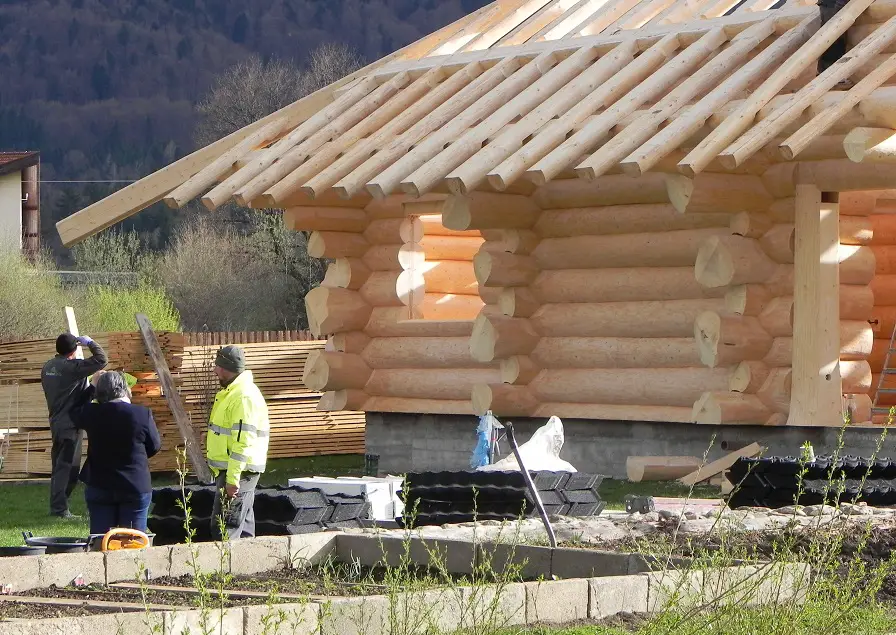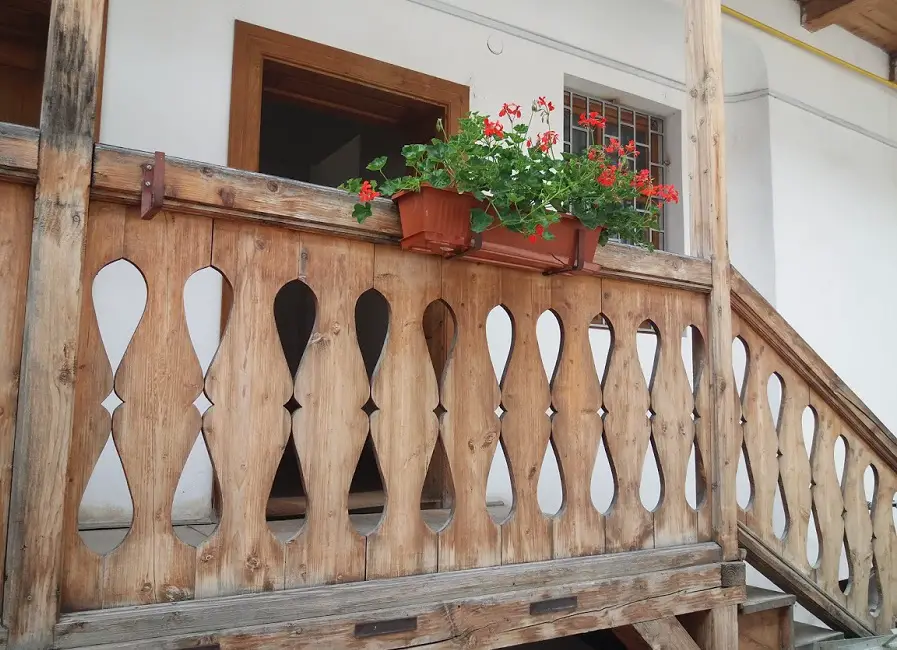Most frequently asked questions received from readers are related to how wood behaves outdoors and what should be done to make it as resistant as possible. The resistance of wood to exterior weathering depends not only on the quality of the finishing materials used or the way they are applied, but also on how well the natural wood behaves to external factors. Outdoor resistance is often confused with durability. However, durability is a broader property that shows how resistant wood is to physical, chemical and biological stressors. It is the property that engineers and architects need to take into account when using wood in building or interior design projects, especially when they are structural.
Wood does not have the same exterior strength regardless of species, a fact discovered long before it was subjected to sophisticated laboratory determinations. After using it, people discovered that some species are more resistant than others. From experience, they learned which are more resistant to rain and snow, in soil or water. That's how they knew how to choose the best wood resistance of houses and fences, for ships or the pillars of lake dwellings.
Soil contact resistance of wood. Resistance classes
The most important criterion for classifying exterior wood is its resistance to ground contact. In the contact zone, the wood is highly stressed, the aggression of environmental factors being at its maximum. If you are curious to see what a stake that has been in the ground for a longer period of time looks like, you will notice that the most "eaten", thinned area is exactly the one in contact with the ground. And the part that has been completely in the ground has held up much better.
Based on this criterion, resistance classes have been established. These can be found in the European Community standard EN 350-1, which is also valid in Romania. Here are the 5 resistance classes:
- Class 5 - the wood is perishable, with a durability of less than 5 years (less than 1 year in some EC countries). This category includes poplar, fagul, birch
- Class 4 - low-strength wood. Species in this class last 5 to 10 years. [ pine , molid ]
- Class 3 - moderately resistant wood. Time interval 10-15 years. [ dolaglas, larch ]
- Class 2 - durable wood. Life span: 15-25 years. [ oak, chestnut, acacia, red cedar ]
- Class 1 - very durable wood. Over 25 years. [ tec, iroko ]

External factors that are damaging to wood
The outdoor resistance of wood is not only determined by how well it resists ground contact. There are works which do not even take this criterion into account (cladding of wooden houses, roofs, structures positioned on pillars). In this case, it is necessary to see how well the wood behaves in terms of expansion and contraction, how much it cracks due to seasonal changes in humidity or temperature, how resistant it is to the action of the sun's rays or how quickly it is attacked by fungi, mould or insects.
From strength tests, measurements of certain parameters and simple observation of the wood's appearance over time, it has been concluded that wood containing resins or tannins is much more resistant to water. This is the case for resinous or that of acacia. That is why species with low resistance to ground contact, such as pine or spruce, are still used to build houses. But they are built on stone or concrete foundations, avoiding direct contact with the ground.
Species that do very well outdoors or in water are oak, chestnut and ulmul. Oak was used extensively in the past to build steamboats, and chestnut (not the edible-fruited kind), widespread in Italy, was used, along with oak, to build the pillars on which the houses in Venice are still supported today.
Of all the species, the one that performs very well in all outdoor resistance tests is tecul. It is wood that can be used outdoors and without protection, its properties remain unchanged for a long time.
More information on the behavior of different species to the action of wood-boring fungi, wood beetles or termites can be found in EN 350-2. A paper with many determinations, figures and technical information on the durability of different wood species in the country can be found at here.

Is wood of the same species equally resistant regardless of its age, cutting method or internal structure?
The external strength of wood is also different inside the same trunk. There is a very big difference between sapwood and heartwood. In the section perpendicular to the axis of the trunk, two zones are visible in most species: a lighter colored zone on the outside (just behind the bark) - alburn - and a central, darker - heartwood.
The sapwood is the area through which food is transmitted when the tree is standing and is therefore more loose and absorbs water easily. The heartwood is the 'old' part of the tree, the area of strength, which is no longer used for food transportation. It's tougher, more compact, with no tendency to absorb food. As cut wood, in the fiber-head zone, sapwood absorbs much more water than heartwood. This is why the sapwood of all hardwoods is classified as Class 1 for resistance to soil contact. The lumber of a wood that is considered to be externally resistant will not be as resistant if it also contains sapwood.
Absorption is also different with age because the ratio of alburnum to heartwood changes with age. The proportion of sapwood is higher in youth, when the need for food is greater. Over time, some of the wood hardens, making the tree stronger and harder to fell. This is the reason why young trees are not chosen for houses and structures.
I only said about the sapwood of the leaf because things are different with resinous plants. In them it is very hard to distinguish the sapwood from the heartwood (in spruce it is impossible), and absorption is not so different because the transportation of food in the resinous is done by a different system. Softwoods don't have pores, so water absorption is much slower. The hygroscopy (ability to absorb water) is much lower, which is why spruce is a successful outdoor wood.
The water absorption capacity is also determined by the way the wood is cut. Water is more difficult to absorb in radially or tangentially cut elements, which are preferable when choosing wood for outdoor use.
Increasing the outdoor resistance of wood
To have a timber construction that is resistant to the outside, we need to make sure that:
- wood has a moisture content less than 20% but more than 14%
- is as well protected as possible so as not to absorb water. Wood that does not come in contact with water or water vapor under normal atmospheric conditions will not exceed 15-16% moisture content
- it has not been attacked by insects, fungi or molds and is protected against their possible attack
- the materials with which it is protected are resistant, and the protection is applied to all faces or edges of the wood.
About materials for exterior wood protection we've talked about on other occasions. Resilient or non-film-forming materials are preferable. As you have heard time and time again, wood works, that is to say, it varies dimensionally depending on the outside humidity values. A rigid film will crack and the protection will disappear. That's why I frequently recommend oil or wood protection wax.
Two things I want to emphasize about finishing the wood to make it as resistant as possible to the outside:
- without proper maintenance no material will last perfectly for years
- transparent products are not outdoor resistant. Even if they protect against water they do not protect against UV radiation. Wood will still change color over time. The most resistant are colored paints (not white), and in second place are semi-transparent colored lacquers.
I hope you find the above information useful. If you find the article interesting for others, please feel free to share it. And if you have any clarifications or questions, leave them below in the dedicated area. You will certainly get an answer.


































Hi, I would like to build a small children's cottage at height.What kind of wood do you recommend to make it and what maintenance materials.Thanks.with respect.
Hello!
Softwoods, spruce or pine (or larch, but it's harder to find and more expensive). They're affordable, tough outdoors and have a lower specific weight. Oak and acacia are also good for outdoors, but they are harder species - harder to work with, harder to machine - heavier, and more expensive.
In my opinion, for such a house, the best finish is the oil finish. Use oil-based coloured varnish because it is also resistant to the sun (UV radiation), not just moisture. If you don't want the wood to show (to paint it) use oil-based paint or alkyd paint (the latter is cheaper).
Below are some links that may help you.
All the best!
https://revistadinlemn.ro/2018/08/03/12-reguli-simple-pentru-a-avea-constructii-din-lemn-rezistente-la-exterior/
https://revistadinlemn.ro/2018/06/25/8-cele-mai-frecvente-intrebari-despre-protejarea-lemnului-la-exterior/
https://revistadinlemn.ro/2019/04/17/7-reguli-de-respectat-la-finisarea-cu-ulei-a-lemnului/
https://revistadinlemn.ro/2017/09/20/lemnul-de-larice-stejarul-coniferelor/
Hello, I would like to know what wood to use for a countertop of 8 cm maximum 10 cm that will support a small natural stone sink located in the bathroom. Thank you
Hello!
You can use acacia, oak, resinous. The construction solution is very important because water must not puddle if it gets on the wood, and air must circulate to allow drying. If these conditions are not respected, the wood will deteriorate over time, no matter how strong it is. I recommend finishing it with oil. It is a very good protection against water.
All the best!
Hello! First of all please allow me to congratulate you for the very interesting materials. The fact that you take your time and answer those who ask you, for that you have all my esteem and admiration. I have a garage made of rosewood, it was once varnished, but I would like to protect it as I have seen wasps nesting and some of the wooden bars have cracked and I would like to know if it is enough to apply a thick translucent varnish, Sadolin Extra, or is something else needed? Also, as dust has settled on the wooden bars over time, what could I clean them with? Is it enough to wipe them with a damp cloth, sprinkle them with a jet of water and then leave them for a few days to dry? Thank you very much for your kindness!
Hello!
Thank you for your appreciation!
If the previously used varnish was not water-based, you can use Sadolin Extra. Sadolin is an alkyd varnish, similar to oil-based paints and is not compatible with water-based products. Do not apply a single thick coat because thick coats crack over time due to stresses in the film. The rule when varnishing/painting is: thinner coats and more coats. In this case apply 2-3 coats of varnish. If the varnish is very thick you can dilute it with white spirit (petrosin, gas) or another petroleum derivative (petrol). There is no need to apply anything else over the varnish.
For cleaning, water jetting would be more effective. Being outside, the dirt accumulated over time is more consistent and yields harder just wiping with a wet cloth. After washing thoroughly with a water jet, wipe with a cloth to remove stubborn dirt. Then leave to soak thoroughly before applying varnish.
Good luck!
I discovered this site as a result of my woodworking related research. I've been experimenting and building stuff for about 6 years, since I moved from my apartment to a house with a yard. I've made a wooden deck connected to the house, I've done the attic, with extra insulation, I've also made furniture. As I've progressed, I've also acquired more powerful power tools, a stationary circular saw, in addition to hand tools, bormasini, etc. Now I plan to purchase a hearse. The reason is as follows. I discovered in my parents' farm, behind a building, a pile of willows 2-3 m long and 10-15 cm diameter, which are about 10 years old. Also, this spring I cut down a plum orchard (100) that were no longer producing, planted in 1990. I saved a few whole ones, they are about 15-20cm diameter and I intend to make something out of them. For now I'm letting them dry out.
My question is about how long would it take to let them dry before cutting splinters from them. The intention is to make shingles and some small furniture, coffee table, shelf, bookcase body. Out of the sails I don't know what to do. They are thin but would work cut into shingles and then glued, still some table top. What advice do you have on how to use them? These are dry, minimum 10 years. Also, I would have to decommission a pig sty made of willows, about 60-70 years old, I think I can salvage some of the 10-12 cm logs, pretty shrinky.
Fine!
Good evening!
Congratulations courage and determination!
As for the plums, the sooner you cut them into planks, the better. It's a high-density wood that's at risk of splitting. It's best to insulate the ends with a solution of aracite, wax, paraffin or diluted primer. The bark should be removed quickly to avoid the risk of insects underneath entering the wood. Plum wood is very beautiful, a real gift for enthusiasts. Before you process it the humidity should be in the range 8-12% if you use it indoors. Otherwise there is a risk of twisting or cracking. I leave below the article about plum wood, maybe it will inspire you.
Acacia wood is highly valued for the strength structure of houses and for outdoor projects (gazebos, pergolas, fences). It is very resistant. Salvaged acacia from pigsties will be very hard and durable. Vapors from the animal waste make the wood so strong that sometimes the axe will jump when you hit it.
A few articles at the end, I hope you find them useful.
Good luck in your new projects!
https://revistadinlemn.ro/2021/11/17/irizatiile-roz-violet-olive-sau-gri-fac-din-lemnul-de-prun-unul-remarcabil/
https://revistadinlemn.ro/2016/11/02/salcamul-cel-puternic-rezistent-si-frumos/
https://revistadinlemn.ro/2017/07/29/cum-construit-foisorul-din-salcam-recuperat-dintr-un-vechi-hambar/
https://revistadinlemn.ro/2022/06/23/ce-solutii-au-tamplarii-pentru-reducerea-craparii-lemnului-la-capetele-bustenilor-grinzilor-si-scandurilor/
https://revistadinlemn.ro/2017/07/04/uscarea-lemnului/
https://revistadinlemn.ro/2021/09/02/am-taiat-nucul-cum-il-usuc-sa-nu-crape/